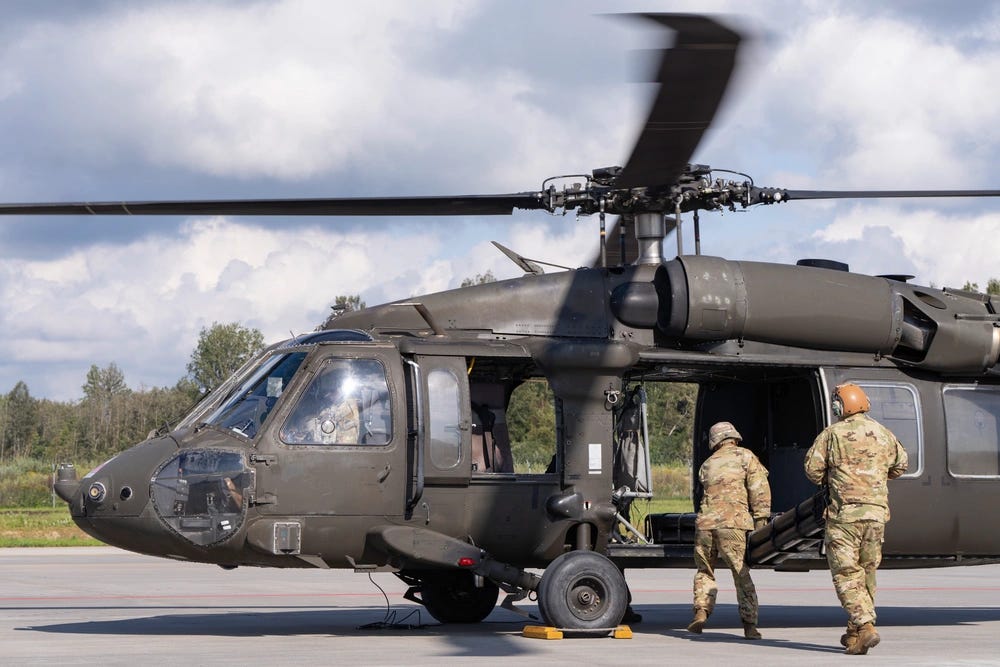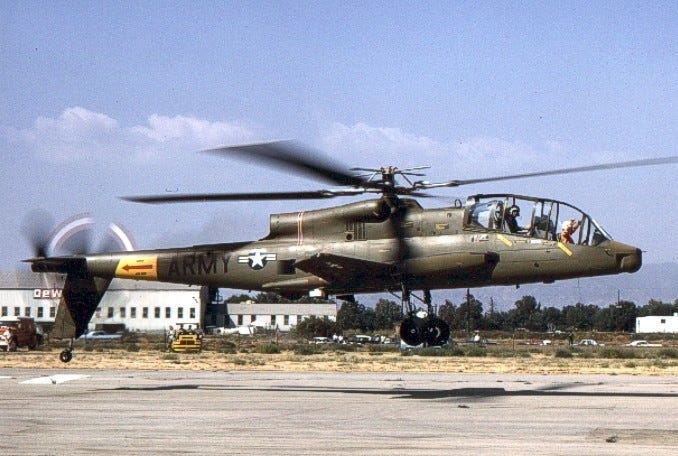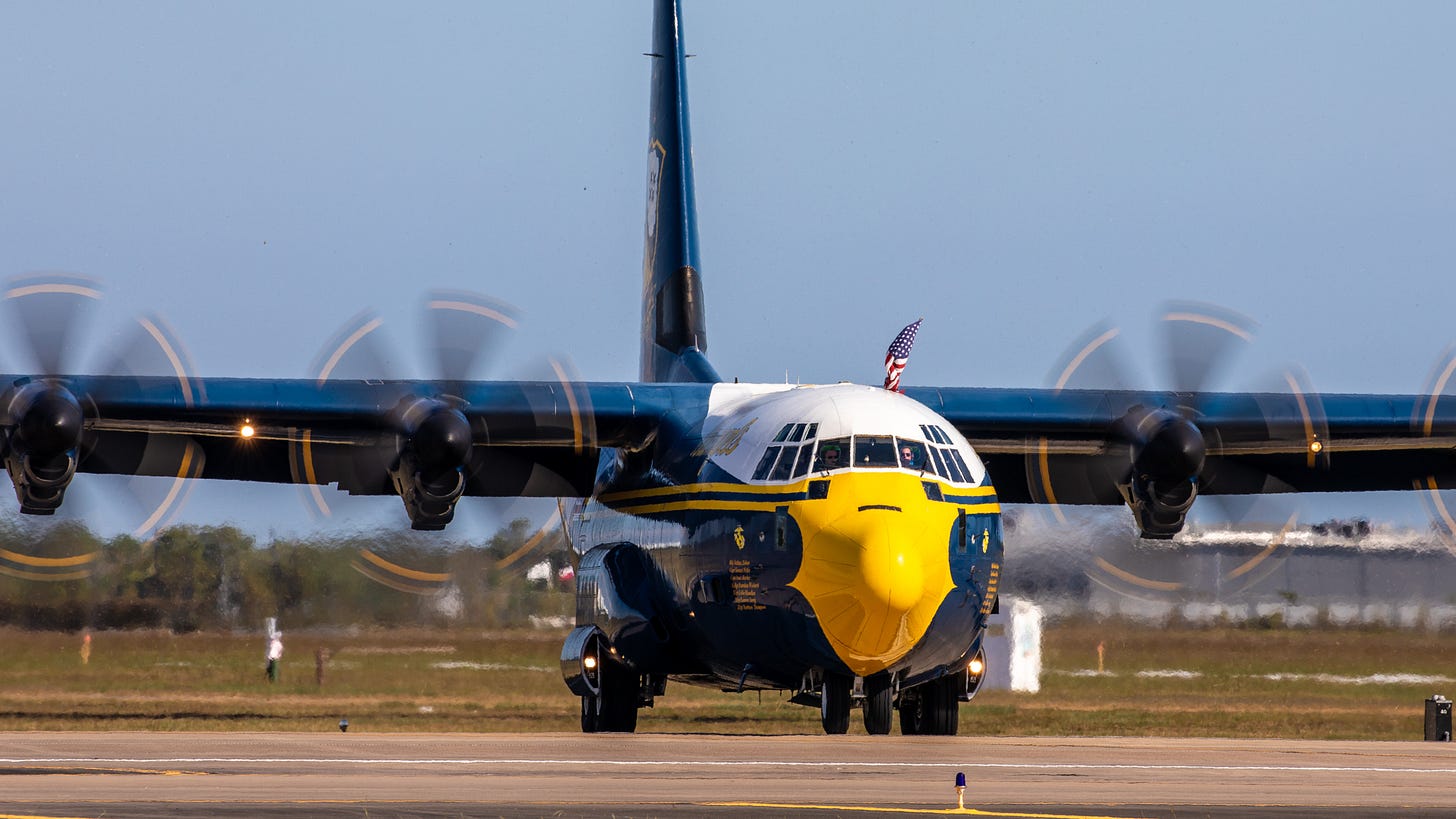From Cheyenne to Drones: Army Aviation at a Crossroads
As the Army trims 6,500 aviation jobs in favor of unmanned systems, we look back at the daring Cheyenne prototype that once promised to redefine the battlefield.
"Army Aviation is rapidly transforming to meet the changing character of war—leveraging drones where once only pilots could fly." — Maj. Montrell Russell, U.S. Army
Hello! Well, while I didn’t set out to make this a helo issue, but given current events as well as historical ones, it all lined up. Read on and thanks for being here.
Mission Briefing
Army Aviation Faces Major Cutbacks as Force Shifts Toward Drones
The U.S. Army has confirmed plans to eliminate 6,500 aviation jobs from its active-duty force, marking one of the largest restructuring moves for Army Aviation in decades. The reductions, set to begin in fiscal year 2026 and continue through 2027, reflect a deliberate shift away from traditional manned aircraft in favor of unmanned aerial systems (UAS).
Maj. Montrell Russell, an Army spokesman, explained the rationale: “The Army is transforming aviation to meet future operational demands—faster, leaner, and more capable. This initiative ensures Army aviation is integrated across components, modernized in capability, and optimized for global mission requirements.”
Currently, the Army Aviation Branch fields about 30,000 soldiers across flight crews, maintainers, and pilots. Talent boards will begin convening in October to determine which officers and warrant officers will remain in the aviation community and which will be reclassified into other branches. Panels of senior leaders—including brigadier generals, veteran brigade commanders, and senior warrant officers—will review junior pilots from Apache and Black Hawk units, measuring not only past performance but also their progress toward achieving “pilot in command” status.
The Army is also considering similar reviews for enlisted aviation personnel. While the service has promised to help affected troops transition into other roles, the cuts will still represent a cultural and operational shift for a branch that has been central to the Army’s combat identity for more than 80 years. These are transformative times indeed.
The Changing Character of Army Aviation
Army Aviation was formally established as a branch in 1983, but its roots stretch back to World War II liaison aircraft—small Piper Cubs that spotted artillery and ferried messages across the battlefield. During Vietnam, the helicopter emerged as the Army’s defining symbol, with the UH-1 Huey becoming as iconic as the infantry it carried. The subsequent introduction of the AH-64 Apache attack helicopter and UH-60 Black Hawk utility helicopter cemented the branch as a core element of the combined arms team.
Today, Army Aviation remains the largest rotary-wing fleet in the world, fielding more than 4,000 helicopters ranging from Apaches and Black Hawks to CH-47 Chinooks. Yet the very airspace once dominated by these platforms is increasingly accessible to ground troops through tactical drones, reducing the demand for highly trained helicopter pilots in certain missions.
The Army’s pivot echoes broader trends across the U.S. military, where the demand for unmanned systems continues to surge. Small quadcopters provide platoons with organic reconnaissance. Medium and large UAS deliver persistent surveillance and strike capability once reserved for manned aircraft. By 2030, Army leaders envision aviation as a hybrid force, blending traditional helicopter formations with swarms of drones integrated at every echelon of combat.
As Russell noted: “The Army is rapidly transforming to meet the changing character of war and leverage these technological advancements…inducing changes in both ground and air formations to optimize our collective force structure.”
This restructuring signals a generational shift: from the “Air Cavalry” ethos of Vietnam and Iraq to a drone-enabled future where aviation support is no longer the exclusive domain of pilots in cockpits but also of soldiers wielding tablets and control stations on the ground.
Personally, while I understand the value of drones, there’s something strange about seeing Army Aviation’s manned helicopter fleet decreasing in size. What do you think? Comment below and we can discuss.
This Week in Aviation History
21 September 1967 – The Cheyenne Takes Flight
On September 21, 1967, the Lockheed AH-56A Cheyenne lifted off for the first time at Van Nuys Airport in California. At the controls was Lockheed test pilot Donald Riley Segner, a former Marine Corps lieutenant colonel, alongside Army project officer Lt. Col. Emil “Jack” Kluever. Together, they ushered in what the Army hoped would be the next generation of armed helicopter warfare.
The Cheyenne was no ordinary helicopter. It was a radical design: a two-seat, tandem-cockpit, compound helicopter with a rigid four-blade rotor, stub wings, a tail rotor, and a distinctive pusher propeller for high-speed flight. Powered by a 3,485-shaft horsepower General Electric T64 turboshaft engine—the same family of engines that powered the Sikorsky CH-53—the Cheyenne could cruise at 195 knots (224 mph) and reach speeds over 240 mph, far faster than contemporary helicopters like the UH-1 Huey. It could climb at an impressive 3,000 feet per minute and had a combat range exceeding 1,000 nautical miles, making it one of the most ambitious rotorcraft ever built.
Armament options reflected its role as both a gunship and an anti-armor platform. The nose turret could mount either a 7.62mm minigun or a 40mm grenade launcher, while stub-wing hardpoints carried rocket pods or BGM-71 TOW anti-tank missiles. In many ways, it was a forerunner of the dedicated attack helicopters that would define Army aviation in later decades.
Despite its cutting-edge capabilities, the Cheyenne’s program was plagued by technical challenges. Of the ten prototypes built, two were destroyed in accidents when rotor blades struck the fuselage, one fatal to the pilot. By 1972, amid rising costs, delays, and interservice rivalries, the program was cancelled—paving the way for the AH-64 Apache, which ultimately became the Army’s long-serving attack helicopter.
The Cheyenne remains one of the most fascinating “what ifs” in aviation history: a machine decades ahead of its time, blending helicopter agility with near fixed-wing speed.
In fact, I have a full video all about the Cheyenne—its daring design, troubled program, and legacy—that you can check out in the next section of this newsletter:
In Case You Missed It
All about Lockheed’s helo that was ahead of its time:
Photo Outlet
Every issue of Hangar Flying with Tog gets you a free image that I’ve taken at airshows:
Feel free to use these photos however you like, if you choose to tag me, I am @pilotphotog on all social platforms. Thanks!
Post Flight Debrief
Like what you’re reading? Stay in the loop by signing up below—it’s quick, easy, and always free.
This newsletter will always be free for everyone, but if you want to go further, support the mission, and unlock bonus content, consider becoming a paid subscriber.
Your support keeps this flight crew flying—and I couldn’t do it without you.
– Tog






